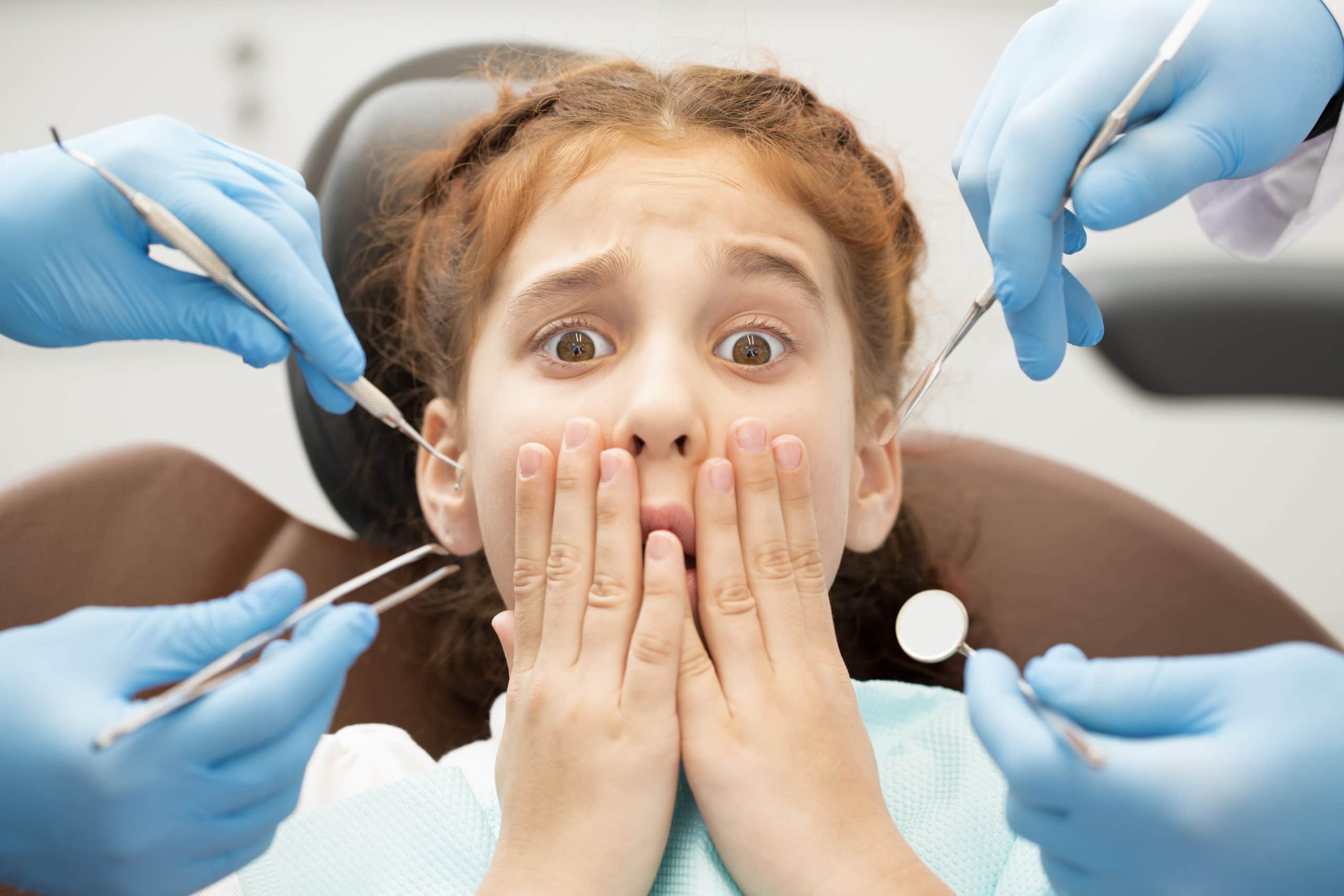
Sometimes fear begins before anything happens. Before the tools. Before the chair. It starts early. Maybe a sibling mentioned something. Maybe a parent winced without meaning to. Fear travels fast in children. Not always from experience. Sometimes from imagination. The unknown becomes bigger than the real. The memory isn’t always theirs. It gets inherited in glances, whispers, or careless phrases.
Waiting rooms feel bigger when you don’t know why you’re waiting
Time moves slower in a dental clinic. The smells are unfamiliar. The sounds echo differently. Other kids’ reactions become clues. A sigh, a shuffle, a voice. Everything means something. Children read rooms better than adults think. If no one explains, they assume. If explanations are too late, fear sets in early. The wait becomes its own story. And that story usually ends in fear.
Some children worry about being separated, not treated
They don’t say it, but they watch. Does the parent stay? Does the door close? For some, this is the fear. Not the drill. Not the mask. Just absence. Some clinics allow parents inside. Others don’t. This matters more than it seems. The treatment is unfamiliar. So they look for someone familiar. If that’s gone, fear doesn’t shrink—it multiplies.
The chair feels like a trap even before it moves
Straps aren’t visible, but children feel them anyway. The moment they recline, something shifts. They lose height. They lose view. That feeling of control slips. It’s not the angle—it’s the helplessness. Adults forget how big a chair looks when you’re small. It rises, tilts, and the world spins with it. The exam hasn’t started, but the fear has.
Bright lights and masked faces confuse more than they comfort
The light overhead glares. Not warmly. The mask hides smiles. The goggles reflect faces. Children notice all of it. They search for eyes. They listen for tone. If the voice is rushed, fear grows. If instructions are unclear, confusion sets in. Tools are metal. Noises are sharp. It’s not about pain—it’s about unfamiliarity. A masked adult leaning in can feel more alien than helpful.
Questions like “Does it hurt?” already suggest something will
Even before the child feels anything, the language shapes their expectations. Words matter. “Just a little poke” becomes a warning. “Be brave” implies danger. These phrases try to help, but they hint at pain. That’s how anxiety builds. The child starts preparing for something bad. Even if nothing hurts, the suggestion leaves a trace. Honesty works better. So does simplicity.
Bribes offer short-term relief but deepen long-term resistance
“I’ll buy you a toy after” sounds generous. But it places reward after danger. The child learns: fear now, treat later. They start associating dentists with a deal. That means the visit itself feels like a cost. Over time, rewards escalate. But trust doesn’t. The better path? Normalize the visit. Remove the bargain. Let the appointment stand alone. It’s not punishment—it’s health.
Parents’ body language speaks louder than explanations
You might say “It’s okay,” but your shoulders tighten. You glance at the clock. You grip the form too hard. Children notice. They watch. They feel your unease. If you hesitate, they panic. If you reassure without calm, they question. Parents don’t need perfect words. Just presence. Stillness. Breath. The child mirrors that. Confidence transfers quietly.
The noise of the tools becomes louder when no one explains it
Whirring. Clicking. Sucking. The sounds seem harmless to adults. But children hear differently. Volume isn’t just decibels. It’s meaning. A sound without explanation becomes a warning. If the suction tube sounds like a vacuum, say so. If the drill vibrates, describe it first. Once a sound is named, it shrinks. Mystery amplifies fear. Naming calms it.
The word “injection” creates fear before the needle arrives
It’s not always the shot—it’s the thought. Even the word carries weight. Children remember the last vaccine. Or the scream from another room. “Numbing” sounds better. “Magic water” even better, if truth isn’t lost. The trick is context. Honesty helps, but timing matters. Don’t name the fear too soon. But don’t lie either. The middle is where trust lives.
Timing appointments with the child’s rhythm changes everything
Don’t schedule at nap time. Or meal time. Or after a long school day. Fatigue sharpens fear. Hunger amplifies tension. Choose mornings if possible. After a snack. After rest. Energy affects reaction. A tired child resists more. A calm one absorbs better. You don’t need perfection. Just rhythm. Respect their state—not just your calendar.
First visits should be short, not perfect
You don’t need to complete everything. Just begin. Let them sit in the chair. Count teeth. Show mirrors. That’s enough. A successful visit isn’t one with procedures—it’s one with comfort. Familiarity beats thoroughness. A child who feels seen comes back. A child who feels forced resists more later. Start small. Let trust grow in steps.
Repetition is better than surprise, even if it seems boring
Children love patterns. Even anxious ones. Knowing what comes next soothes more than it startles. Walk them through it. Repeat it tomorrow. Let the story become memory. If the appointment is rare, it feels strange every time. If it becomes routine, fear has less room. Regular visits aren’t just medical—they’re psychological. Predictability is comfort.
Stories help when they focus on control, not drama
Books can help. Cartoons too. But the message matters. Not “The dentist saved the day.” That’s too big. Too distant. Show stories where the child asks questions. Where they pause. Where they think. Where they say no. And then yes. These arcs reflect real fear. The point isn’t to glamorize dentists. It’s to normalize the experience.
Toys in the clinic don’t erase fear, but they soften the edge
A soft toy doesn’t cure anxiety. But it gives the hands something to do. A distraction. A friend. Some children grip tighter than others. That grip becomes their anchor. Having something familiar changes posture. Breathing shifts. Sometimes it’s a fidget. Sometimes it’s a sticker to hold. Not as a reward—but as presence. The hand needs comfort before the mouth does.
Smell is memory, and clinics have strong ones
That antiseptic scent lingers. It marks the room. The nose recognizes before the eye does. Children remember smells. They connect them to experience. You can’t remove it. But you can counter it. Lavender in a mask. A minty handkerchief. Something new layered over the old. You aren’t erasing memory. Just offering options.
Some children cope by asking many questions
Let them. Even if it slows the visit. Even if it interrupts the dentist. Curiosity is safety. Every answer creates stability. When children stop asking, it’s not always confidence. Sometimes it’s shutdown. A question is trust made visible. Answer with detail if needed. Or with “We’ll learn together.” That’s enough. They want partnership, not perfection.
Watching another child cry can undo everything
You’ve prepared well. But in the waiting room, someone screams. And your child freezes. Fear is contagious. It travels faster than reassurance. That’s why clinics with quiet spaces help. Or headphones. Or coloring pages. Create mental walls. Protect their atmosphere. One outburst shouldn’t shape their view. But it can. And it often does.
